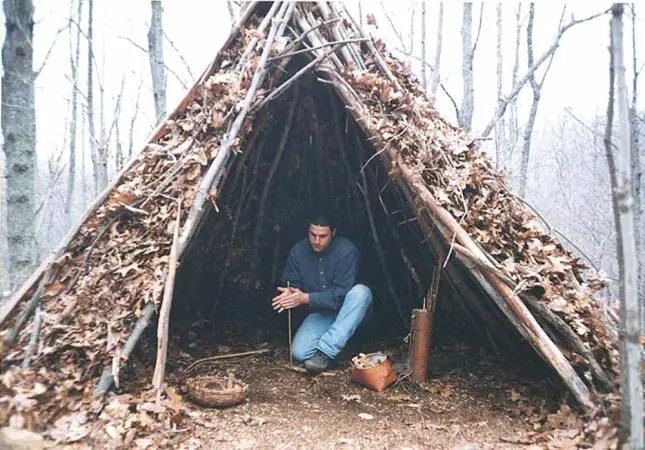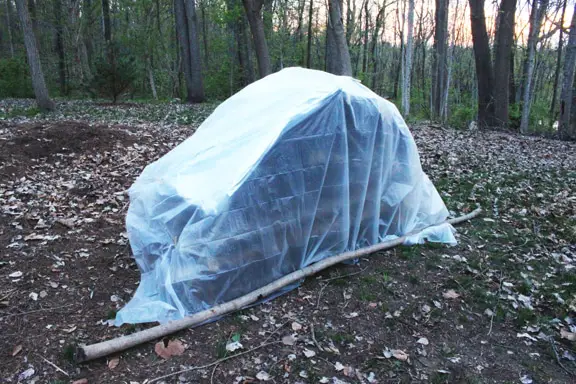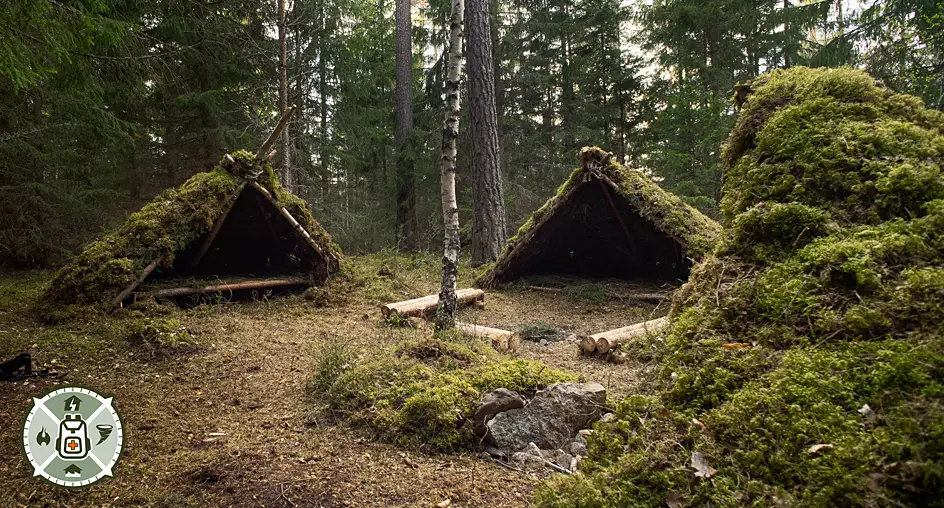Welcome, adventurer! In this article, you will learn the essential skills needed to construct a survival shelter in various environments. From the frigid cold of the mountains to the scorching heat of the desert, you will discover practical tips and techniques to keep yourself safe and comfortable in any situation. Let’s dive in and explore the world of survival shelter construction together! Have you ever found yourself in a survival situation with the need to build a shelter to protect yourself from the elements? Whether you are lost in the wilderness, stranded after a natural disaster, or facing an unexpected emergency, knowing how to construct a survival shelter can be a life-saving skill. In this article, we will discuss the essential steps to build a shelter in different environments to ensure your safety and survival.
Understanding the Importance of a Survival Shelter
When you are in a survival situation, having a shelter can make a significant difference in your chances of survival. A well-constructed shelter provides protection from extreme weather conditions such as rain, snow, wind, and sun. It also helps to maintain body heat, prevent hypothermia, and keep you safe from animals and insects.
Why is a Survival Shelter Important?
Imagine yourself stranded in a remote wilderness area with no shelter to protect you from the harsh elements. Without a shelter, you are exposed to extreme weather conditions, which can lead to hypothermia or heat exhaustion. A survival shelter serves as a safe haven where you can rest and recuperate, increasing your chances of survival until help arrives.

Different Environments and Shelter Building Techniques
The type of shelter you build depends on the environment you are in, such as a forest, desert, mountain, or snow-covered terrain. Each environment presents unique challenges that require specific shelter building techniques. Below, we will discuss how to construct a survival shelter in different environments to meet your needs and ensure your safety.
Forest Environment
When you find yourself in a forest environment, building a shelter using natural materials such as branches, leaves, and tree limbs can provide adequate protection from the elements. Look for a location with sturdy trees and flat ground to create a sturdy shelter. Use the following steps to construct a survival shelter in a forest environment:
-
Select a Location: Choose a spot with enough space that is close to a water source but away from hazards such as falling branches or flash flood areas.
-
Gather Materials: Collect branches, leaves, and other foliage to use as building materials for your shelter. Look for fallen limbs and leaves to minimize the impact on the environment.
-
Construct the Frame: Use sturdy branches to create a frame for your shelter, making sure it is tall enough to allow you to sit upright inside. Lean branches against a tree or form a triangle-shaped frame for support.
-
Add Insulation: Layer leaves, ferns, or pine needles on the frame to create insulation and provide protection from the cold ground. Place a thick layer of leaves on the ground inside the shelter for added comfort.
-
Cover the Roof: Add more branches and foliage on top of the frame to create a roof that sheds rain and snow. Ensure the roof is thick enough to prevent water from seeping through.
-
Secure the Shelter: Use vines, ropes, or twine to secure the branches and prevent them from shifting or collapsing during strong winds. Add more foliage for insulation and camouflage.
Remember to build your shelter before nightfall to avoid working in the dark and prioritize your safety by selecting a sturdy location away from potential hazards.
Desert Environment
Surviving in a desert environment requires protection from the scorching sun during the day and the cold temperatures at night. Building a shelter that provides shade and insulation is essential to prevent dehydration and heatstroke. Follow these steps to construct a survival shelter in a desert environment:
-
Find Shade: Look for natural shade such as rock formations or vegetation to protect yourself from the sun’s heat. Avoid building your shelter in low-lying areas that may flood during rain.
-
Use Available Materials: Utilize rocks, sandbags, and light-colored fabric to create a shelter that reflects sunlight and provides shade. Place rocks on the edges of the fabric to keep it in place.
-
Build a Frame: Secure the fabric between two sturdy objects or poles to create a roof that provides shade from the sun’s rays. Ensure the fabric is taut and can withstand strong winds.
-
Enhance Insulation: Cover the ground inside the shelter with sand or fabric to create a barrier against the hot desert sand. This will help regulate the temperature and prevent heat from penetrating the shelter.
-
Ventilate the Shelter: Create ventilation holes or openings in the shelter to allow airflow and prevent heat buildup. Keep the shelter well-ventilated to avoid suffocation and dehydration.
-
Secure the Shelter: Use ropes, pegs, or rocks to secure the fabric and prevent it from blowing away in strong desert winds. Reinforce the edges of the shelter to ensure stability and protection.
Building a shelter in a desert environment requires careful consideration of the intense heat and arid conditions. Prioritize shade, insulation, and ventilation to create a shelter that shields you from the harsh desert environment.
Mountain Environment
Surviving in a mountain environment presents challenges such as high winds, extreme temperatures, and rugged terrain. Building a shelter that withstands these conditions is crucial to your survival. Follow these steps to construct a survival shelter in a mountain environment:
-
Find a Windbreak: Locate a natural windbreak such as a rocky outcrop, tree line, or boulders to protect your shelter from strong winds. Position your shelter behind the windbreak for added protection.
-
Use Durable Materials: Gather rocks, snow, logs, and branches to build a sturdy shelter that can withstand high winds and heavy snowfall. Use large rocks as anchors to secure the shelter in place.
-
Build a Wall: Construct a low wall or barrier using rocks or snow blocks to shield the shelter from cold winds and blowing snow. Leave openings for ventilation and access to the shelter.
-
Create a Roof: Use large branches, logs, or snow blocks to create a roof that slopes away from the wind and sheds snow. Ensure the roof is thick enough to provide insulation from the cold mountain temperatures.
-
Insulate the Shelter: Fill gaps between rocks or branches with snow, leaves, or clothing to provide insulation and block out drafts. Cover the ground inside the shelter with a thick layer of leaves or pine needles.
-
Secure the Shelter: Use ropes, cords, or snow anchors to secure the shelter to prevent it from collapsing in strong winds or avalanches. Test the stability of the shelter before settling in for the night.
Surviving in a mountain environment requires a shelter that offers protection from the elements and can withstand harsh weather conditions. Prioritize stability, insulation, and wind protection to ensure your safety and survival in the mountains.
Snow-Covered Terrain
Facing a survival situation in snow-covered terrain presents challenges such as freezing temperatures, snowdrifts, and limited visibility. Building a shelter that provides warmth, insulation, and visibility is essential to surviving in snowy conditions. Follow these steps to construct a survival shelter in snow-covered terrain:
-
Dig a Snow Cave: Start by digging a snow cave into a snowbank or drift to create a shelter that offers insulation from the cold temperatures. Dig a tunnel entrance that slopes downward to prevent cold air from entering the cave.
-
Create Ventilation: Build a vent hole in the roof of the snow cave to allow fresh air to circulate inside and prevent suffocation. Keep the vent hole clear of snow and debris to maintain proper airflow.
-
Add Insulation: Line the inside of the snow cave with pine boughs, branches, or a sleeping pad to create a barrier against the cold snow. Insulate the floor, walls, and roof to trap body heat and stay warm throughout the night.
-
Close Off Openings: Use snow blocks or fabric to seal off the entrance of the snow cave and prevent cold air from entering. Create a small door that can be easily opened and closed for ventilation.
-
Build Snow Walls: Construct low walls or barriers around the entrance of the snow cave to block wind and blowing snow. Use large blocks of snow to create a windbreak that shields the entrance from strong gusts.
-
Secure the Shelter: Use snow anchors, ropes, or stakes to secure the snow cave and prevent it from collapsing in a snowstorm or avalanche. Test the stability of the shelter before settling in for the night.
Surviving in snow-covered terrain requires a shelter that provides warmth, insulation, and protection from freezing temperatures. Prioritize ventilation, insulation, and visibility to ensure your safety and survival in snowy conditions.

Conclusion
In conclusion, knowing how to construct a survival shelter in different environments is a valuable skill that can save your life in a survival situation. Whether you are in a forest, desert, mountain, or snow-covered terrain, understanding the unique challenges of each environment and the specific shelter building techniques can help you stay safe and secure until help arrives. By following the essential steps outlined in this article and prioritizing your safety, you can build a shelter that provides protection from the elements, maintains body heat, and increases your chances of survival. Remember to practice building shelters in various environments to hone your skills and be prepared for any unexpected emergency. Stay safe and stay prepared.

